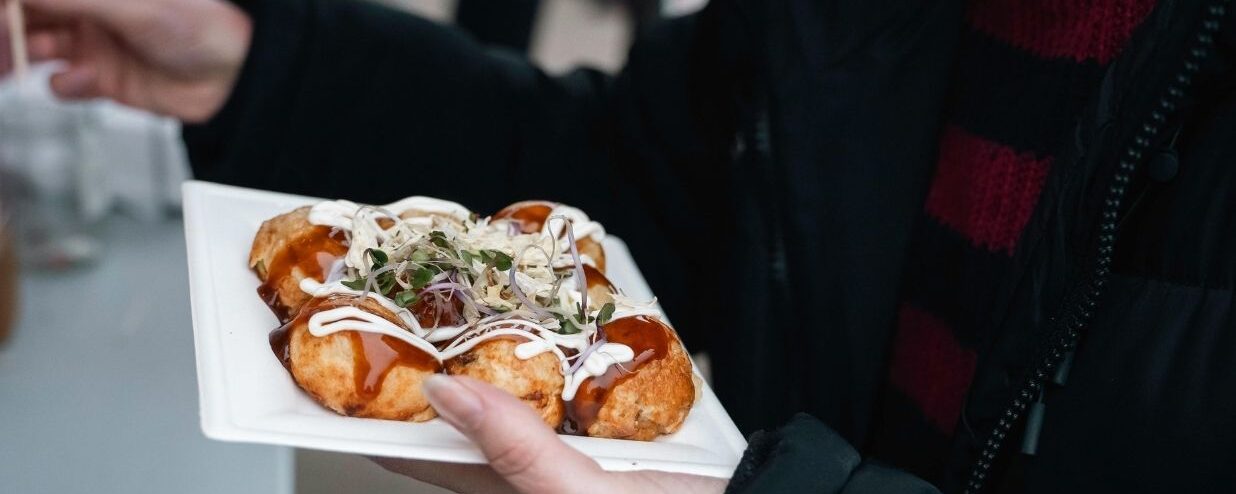What are some of the biggest culture shocks you’ve experienced in Japan? Coming to the country, you might not want to bring with you the “Western culture” complex that many have seen across the globe — or on social media. We might want to acclimate to the Japanese way of life as best as we can, though some of us might not know how hard it would be.
A culture shock is defined as “the sudden change in environment with new social norms.” They all vary in how easy or hard they were to remember and implement. But as Japan continues to blend tradition with modernity through the 21st century, some things will have changed from how they are now.
In this article, we’ll explore some of the most common examples of culture shock in Japan and share practical tips on how to manage or even avoid it altogether!
How is Japanese Culture Different From Other Cultures?
Japanese culture is known for its indirect communication and conformity, but there is so much more to it that isn’t really talked about when comparing it to other cultures. Japanese people have a strong sense of community, unlike any other culture that you have had the chance to see. They are also very respectful of others and see the best in everyone. As you go through this list, you’ll see these recurring themes in the reasoning as to why things are the way they are.
If you’re curious, check out our deep dive into how Japanese work culture differs from that of other countries in the business world.
Common Culture Shock You Might See in Japan
1. Everything, from food portion to clothing size, is smaller
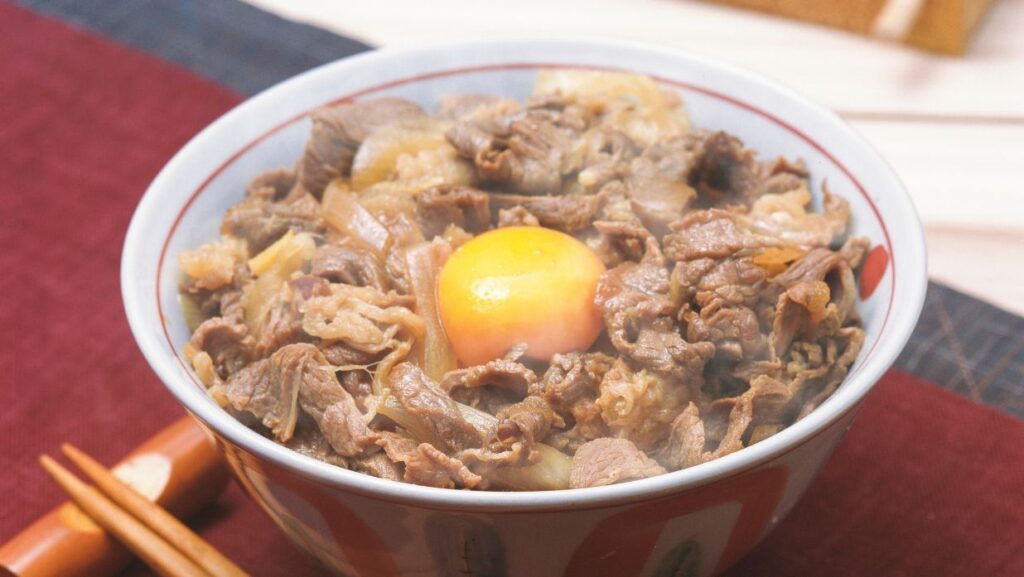
When we say everything is small, we mean everything. From food and drink portions to clothing, be ready to adjust your sizes!
While I knew coming to Japan things would be different, especially for the clothing aspect, I wasn’t mentally prepared to go from medium-sized pants in America to an extra-large large one in Japan! Let alone when talking about portion control for eating, that took a while to get used to, honestly. When looking at the quality of food in comparison to America’s, Japan doesn’t need a lot, let alone when I used to get full in America, I was not feeling good after the meal. My stomach would often hurt.
But when in Japan, at the end of my meals, the end of the meal makes me feel recharged until my next meal. This was something that took a lot of getting used to, as I thought it meant I wasn’t fully done and needed to keep eating. It’s a refreshing feeling, to say the least, and also crazy to think about when comparing it to what I eat back at home.
2. Different sanitary practices
One common sanitary-related culture shock in Japan is the lack of paper towels in public restrooms. Many travelers are surprised to learn — sometimes right before their trip — that it’s a good idea to bring a small hand towel or two. These towels are used to dry your hands after washing, since most bathrooms either have no paper towels or rely on air dryers, which might be a different practice depending on where you are from. It’s best to carry your own towel with you at all times.
3. Japanese bidets are everywhere
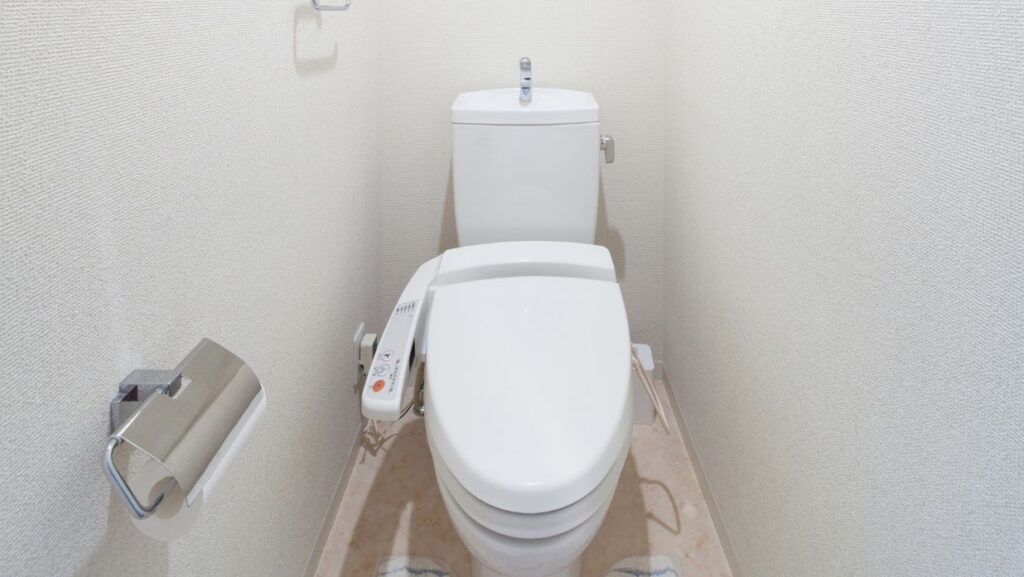
Obviously, Japan is known for its bidet, but even public bathrooms have a bidet attached to them. Some of us might thought it would just be in nicer places like hotel rooms. However, this is a common feature even for public bathrooms. Plus, most bathrooms have an antibacterial spray to use on the toilet after usage to keep it clean between users.
Moreover, while public bathrooms are a thing, they are still uncommon. In train stations, you often need to pay for transit to be able to use the bathroom. Japanese convenience stores (also known as a konbini, コンビニ) might have public bathrooms, but not every store has one available to customers. So, before you leave your accommodation or the restaurant, make sure to use the bathroom there!
If you want more insights into the bidets of Japan, read more here: Guide to Japanese Toilets: How to Use a Bidet and Why You Need One.
4. Japanese society is very good at recycling
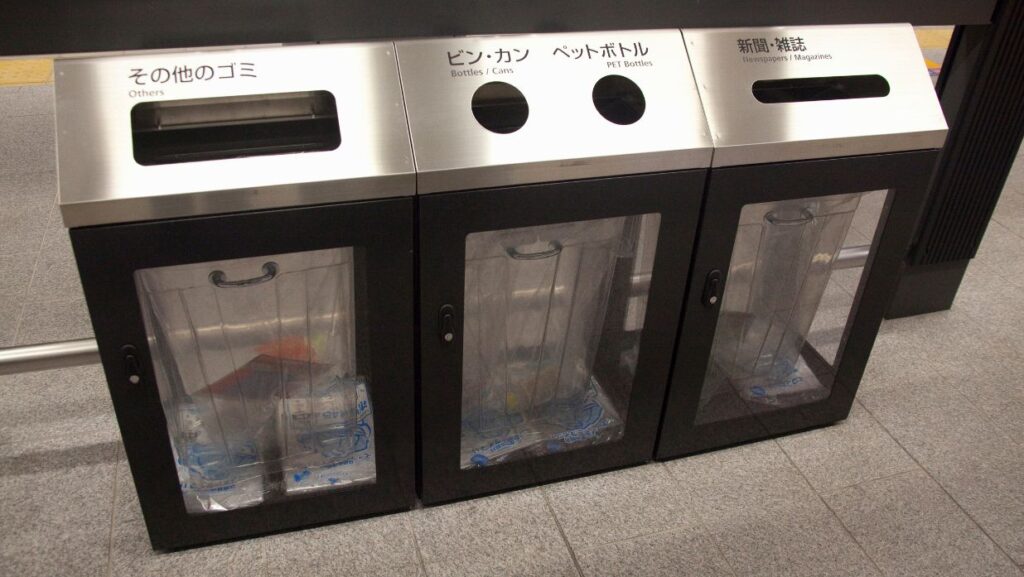
One thing I was heavily unprepared for was my lack of knowledge about recycling. In America, they have different trash for recyclable items, glass, pop cans, and our usual trash, but Japan just elevates it up 6 levels (and as they should!).
When it came to taking the trash out of my room, it would take me about 15 minutes just to make sure I was putting the correct items in the right container because of how organized they are about it. My biggest tip would be to just slow down and read what containers your accommodation has for trash, and use the internet to check about where certain items should go if they aren’t outright about it. It is important to put things in the right trash, though, as there could be financial punishments involved.
Read More: Guide to Garbage Sorting in Japan
5. No trash cans in public spaces in Japan
This might seem a bit contradictory to the earlier point about Japan being incredibly clean. If you’ve ever been to major cities like Tokyo or Osaka, especially in busy neighborhoods like Shibuya, you might notice that despite the cleanliness, public trash cans are surprisingly scarce.
In fact, if you visit popular tourist spots like Tsukiji Market or Harajuku’s Cat Street (both known for their kawaii crepes and street food), you might struggle to find a bin. More often than not, the shop where you purchase your food will accept the trash, but only if it came from their store. If it’s from somewhere else, they’ll likely refuse it.
When that happens, don’t be confused. It’s perfectly normal in Japan to carry your trash home with you or back to your hotel or apartment.
6. Solo dining is normal in Japan
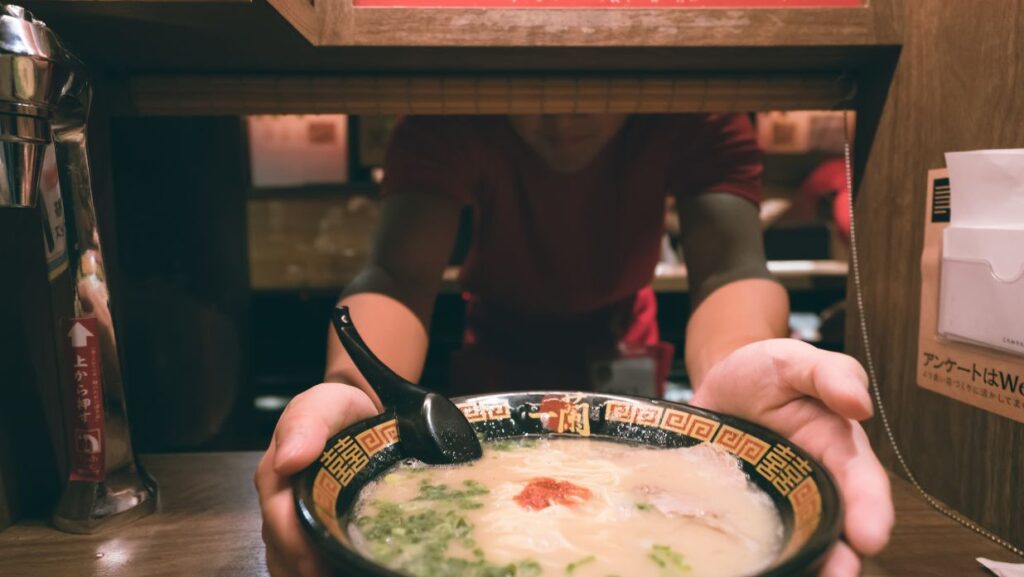
In some countries, dining alone might feel awkward or even be seen as strange, but not in Japan. Solo dining is not only accepted, it’s often encouraged. While many people are familiar with Ichiran’s private ramen booths made for solo diners, this kind of layout isn’t limited to specialty shops.
Fast food chains like Yoshinoya or Sukiya are designed with efficiency in mind, often featuring seating arrangements suited for individuals. Japan’s fast-paced work culture means people often want to eat quickly and quietly, making solo dining a perfectly practical and socially acceptable option.
Read More: How to Order Food at a Restaurant in Japan
7. Leaving unattended belongings is safe(ish)

With cities like Tokyo growing increasingly popular, trendy cafe and restaurants that go viral on social media often have long lines. If you don’t make a reservation in advance, you’ll likely end up waiting or competing for a seat. In some places, especially cafés, you may even be asked to find a seat before placing your order.
Don’t be surprised to see people casually dropping off their belongings — like a bag or jacket — to claim a table before heading to the counter.
This might feel like a culture shock if you’re from a country where leaving your things unattended would be risky. But in Japan, it’s generally safe to leave personal items at your table. Theft is rare, and people tend to be respectful of others’ belongings and space.
In fact, if you lose your wallet in Japan, there’s a surprisingly high chance it will be returned, thanks to the country’s lost-and-found system. Ironically, wallet theft is quite rare in Japan. Instead, the most commonly “stolen” items are umbrellas and bicycles. Umbrella “theft” typically happens on rainy days, when someone takes a similar-looking umbrella from a storefront rack.
8. No tipping!

We’ve all been there: enjoying a nice meal only to be surprised by a higher-than-expected bill once tax and service charges are added. But in Japan, what you see is what you get: menu prices already include both tax and service fees.
The no-tipping culture can be a surprising (but welcome) culture shock, especially if you’re from countries like the United States. In Japan, tipping is neither expected nor encouraged. In fact, if you try to leave a tip, the staff will likely be confused and politely refuse it. Persisting may even come across as rude or offensive, as good service is seen as a basic part of the job, not something that needs extra reward.
9. Trains in Japan can be efficient — but overwhelming

Japan’s train system is often praised as one of the most advanced and reliable in the world. Trains arrive on time, in-train announcements are clear (often in both Japanese and English), and any delays are announced right off the bat.
But what often surprises newcomers is the sheer scale and complexity of major train stations, especially places like Tokyo Station or Shinjuku Station. These mega-hubs combine multiple railway companies, such as JR Lines and Tokyo Metro, with platforms and exits. For Tokyo Station alone, there are 14 lines!) Navigating from one line to another isn’t always straightforward, and during rush hours, the flood of commuters can make it even more overwhelming.
To make things easier, we recommend downloading Google Maps, which does a great job of guiding you through the maze, showing you the best route, platform number, and even train car positions.
Read More: Guide to Japanese Train Announcements (And Their Meaning)
10. Eating while walking is frowned upon
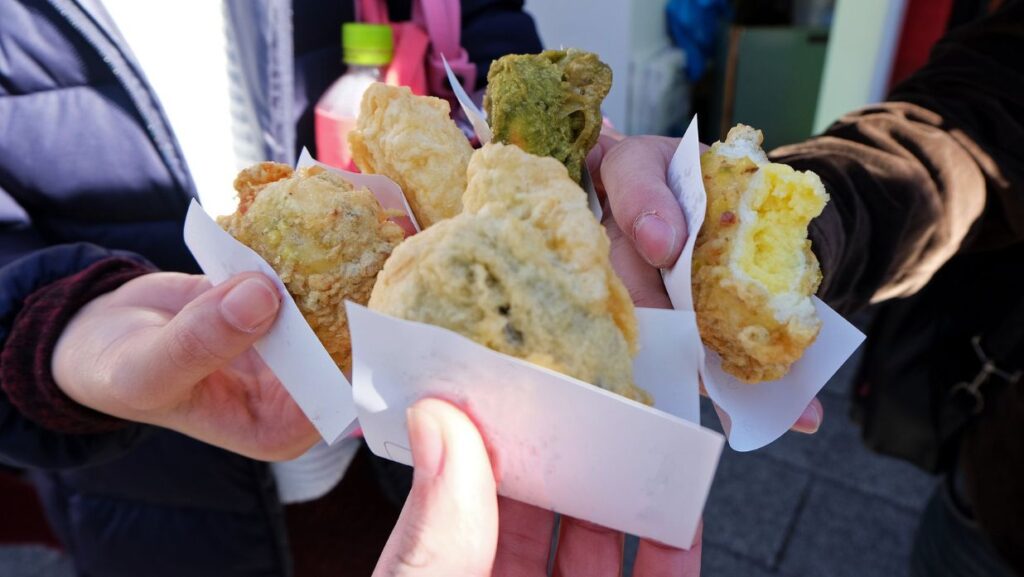
In many countries, eating while walking is common and even encouraged! However, in Japan, this practice, known as tabearuki (食べ歩き), is generally frowned upon.
There are two main cultural reasons behind this: first, as a sign of respect for the food. Japanese culture places a strong emphasis on presentation and appreciation, so eating while on the move can be seen as careless or disrespectful to the effort put into the meal. Second, Japan has a deep-rooted value for cleanliness in public spaces.
While tabearuki isn’t illegal and you won’t be penalized for it, it’s considered poor manners in many areas, and you may even see signs asking people not to do it.
Tips to Cope with Japanese Culture For the First Time
1. Be an Observer First
Not everything will be secondhand when you first get here, no matter how much you may think it will. Watch what the locals are doing first and follow suit. And if there aren’t locals to follow, do what you think you should do and allow corrections to be made by others! Trying your best and staying open-minded is what matters most. Do it correctly after being shown how to, and say a quick “Sumimasen” (Excuse me/I’m sorry) and “Arigatou gozaimasu” (thank you)!
2. Learn Some Basic Etiquette
Come with an idea of some basic respectful cultural norms known is always a good way to start. Because Japan values social harmony, it is best to stay respectful in every scenario you come across.
- Bowing is always seen as courteous and is the standard greeting.
- Certain restaurants/establishments will require you to take off your shoes, so come wearing socks or have socks packed in your bag!
- On public transportation, do not talk loudly or take phone calls until you are out of the station.
3. Learn a Little Japanese
Learning some of the basics of Japanese can take you a long way. English is common when it comes to signs, like in the train station, but it should not be expected for other establishments or people to know English, so come to know some Japanese. People will be very appreciative that you are practicing!
A great way to do that is by joining fun and flexible part-time Japanese classes at Coto Academy! Our students come from all over the world. Some are traveling or backpacking, while others live and work in Japan. We focus on real, practical Japanese conversation, and it’s also a great chance to make new friends along the way.
Here are some common and useful phrases to learn prior to coming to Japan:
| Japanese (Kana) | Romaji | English |
| こんにちは | konnichiwa | Hello |
| おはようございます | ohayou gozaimasu | Good morning |
| こんばんは | konbanwa | Good evening |
| ありがとうございます | arigatou gozaimasu | Thank you |
| いくらですか? | ikura desu ka? | How much is it? |
| きんきゅう | kinkyuu | Emergency |
| わかりません | wakarimasen | I don’t understand |
| 英語を話せますか? | eigo o hanasemasu ka? | Do you speak English? |
| トイレはどこですか? | toire wa doko desu ka? | Where are the restrooms? |
4. Be Patient with Yourself
Coming from a Western society with different norms from the host country you’re in can be very challenging for the first little bit. Give yourself time to adjust to it and don’t get upset if you mess it up. Just keep moving and laugh it off; it’s all about the process and trying again!
Read More: Tips to Overcome Culture Shock in Japan
Reverse Culture Shock in Japan
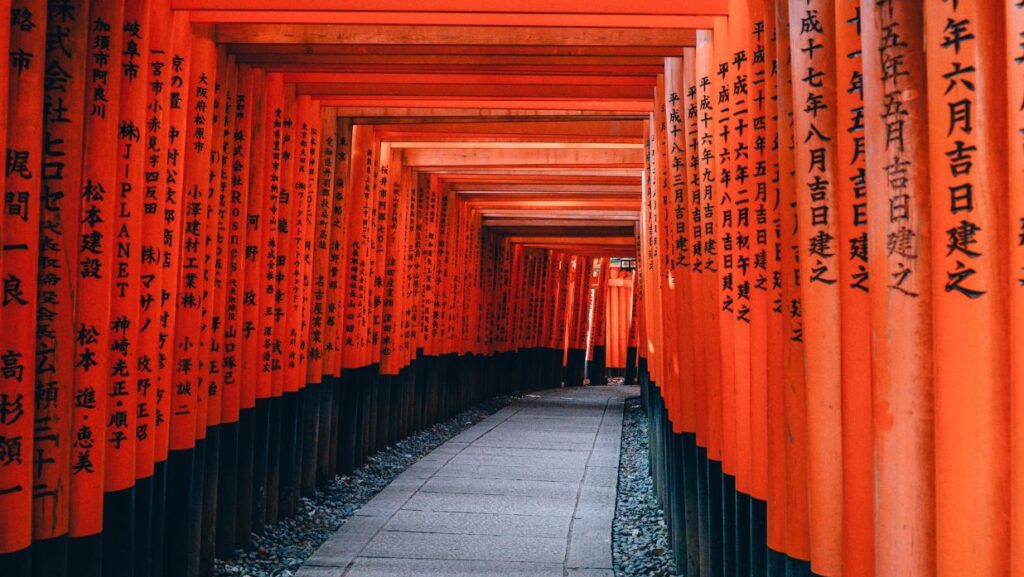
We have discussed culture shocks when moving to Japan, but did you know there is another phenomenon called reverse culture shock?
Moving to Japan is one thing, but returning home or moving from another country back to Japan can bring its own set of surprises. Reverse culture shock happens when the customs, behaviors, or environment you’ve adapted to suddenly feel unfamiliar or even uncomfortable. After being in Japan, these were my top three hardest things to get back into doing.
1. Remember to tip!
Coming home from a trip like Japan, but adjusting to the different expenses and costs at home, can take some time. Since tipping culture is not a thing in Japan, this has become something I need to actively remember when I go out to restaurants. Also, coming back home and going shopping, the feeling of no longer needing to bring a tote bag is strange. It’s one of those things that I almost wish we could implement back at home. It does seem that much more efficient and better for the planet!
2. Punctuality and driving
After relying on Google Maps and public transit for so long, it felt like I had to rewire my brain to remember how to correctly drive my car! Going back to using Waze and not being able to properly estimate the time of arrival, and worrying about parking, was a trip in itself. Google Maps did a very good job at keeping users up to date on train delays, and the business of the trains coming back to traffic was a nightmare in itself. Let alone construction? Hard pass! I never personally felt like my train rides were long, even if Google was telling me that it was a 45-minute commute. Oh, how I yearn for that back!
3. Japan is not a “noisy” society
As an American, the noise level in Japan was eerie but calming. Quiet walks home from the train station and even quieter train rides. It took me a few weeks, even just to hear someone honking on the streets, which I didn’t realize was so uncommon till then.
Coming back, it almost feels like America is rowdy: Everyone is fighting to see who can be louder all the time. I think the beauty in Japan’s quiet is that it really does give you time to just soak in the world around you and de-stress from whatever is bothering you; meanwhile, America’s energy is constantly just “go-go-go”.
While it is good to be able to work in a variety of environments, Japan has made me realize how much nicer it is to be able to hear the wind and flow with the breeze. Why rush when you can just enjoy the moment as it comes?
Conclusion: Cushion Your Culture Shock by learning Japanese!
One of the best ways to cushion your culture shock in Japan is by learning Japanese. This helps you feel better in navigating the streets and understanding local rules. If you’re ready to travel abroad and learn everything for yourself, why not learn some Japanese while you’re at it? Coto Academy offers flexible language courses that tailor to your needs as a student, while offering assistance in cultural learning. Come check out our intensive Japanese lessons and part-time classes here!
Want to study Japanese with us?
FAQ
Why do Japanese people slurp ramen?
Slurping in Japanese culture is often seen as a sign of appreciation for the food and that it is tasty. So if you are happy with how your ramen tastes, don’t be afraid to slurp your noodles!
Why is Japanese culture so important?
Japanese culture holds high importance due to its rich and long history, unique traditions, and overall global influence. Japan’s history deeply shapes its cultural identity.
How hot is Tokyo in summer?
Tokyo experiences hot and humid summers from June to August. And from early June to mid-July, it experiences tsuyu (梅雨), which is their rainy season. Temperatures range from 24 to 34 degrees Celsius (or around 75 to 93 degrees Fahrenheit). Learn more about the rainy season here.
What is an example of culture shock in Japan?
An example of culture shock in Japan is the lack of public trash cans despite the streets being incredibly clean.
What is frowned upon in Japanese culture?
Eating while walking, or tabearuki, is generally frowned upon as it’s seen as disrespectful and potentially messy.
How to deal with culture shock in Japan?
To deal with culture shock in Japan, stay open-minded, observe local customs, and don’t hesitate to ask questions or do research beforehand.
What is surprising about Japanese culture?
One surprising aspect of Japanese culture is the high level of trust — people often leave belongings unattended in public without fear of theft.
